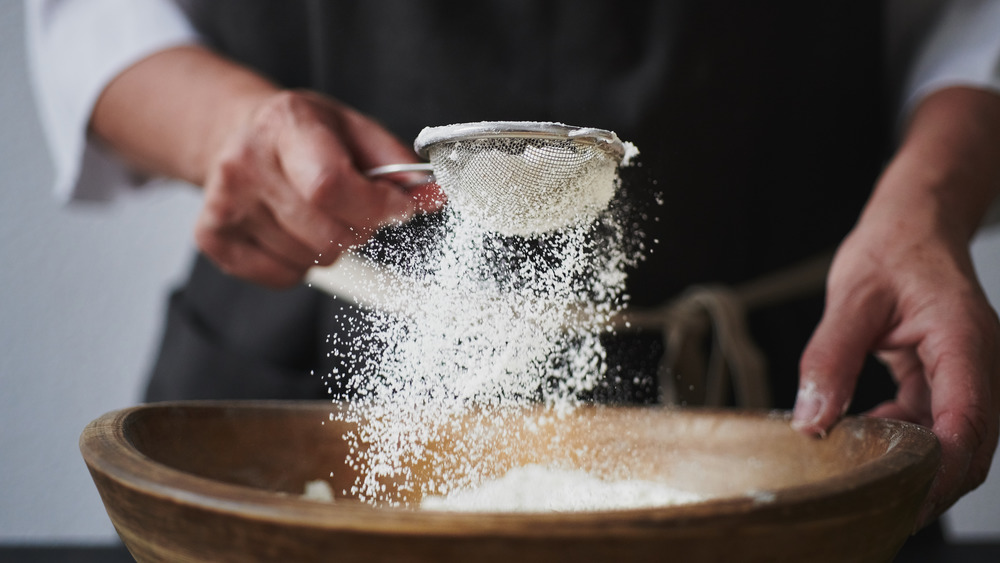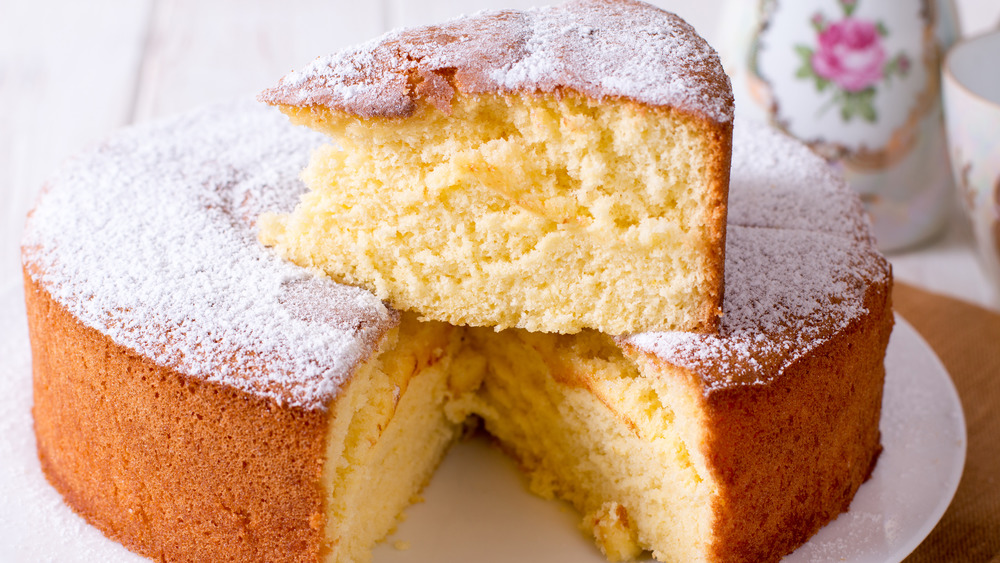The Real Reason Not Sifting Flour Can Ruin Your Recipe
Sifting flour can seem like a completely unnecessary step when you're baking. Though sifting flour was once a vital step to separate any bigger solids such as corn husks or bugs from the flour, nowadays, flour is already so refined that sifting to remove these impurities isn't needed (via The Kitchn). Besides, it's so much easier to just leave the sifter in the drawer rather than having one more kitchen tool to clean. But sifting flour is actually worth the time and effort and can be important for that effort to succeed.
Sifting dry ingredients together, such as flour with cocoa powder, helps the two combine seamlessly. Sifting also spreads out the flour and enables liquids to mix more evenly in recipes (via The Daily Meal). It makes the overall dry mixture lighter too, which plays a big role in some recipes. In fact, failing to sift flour when a recipe calls for it can spell disaster for your otherwise carefully crafted dish.
This is why you need to sift your flour
Sifting flour does so much more than break up any densely packed flour. It is often used in recipes for cakes that have a very delicate texture, such as genoise, sponge, and angel food cakes. If lumps are left in the flour, then it can weigh down the batter and make it more difficult to achieve the rise and light texture of those kinds of cakes. So, if you plan to make a deliciously light and airy cake, you don't want to skip sifting.
There are several key factors when you're measuring and sifting your flour. First of all, you should use a spoon to fill your measuring cup with flour (via The Spruce Eats). This helps you achieve a more precise amount and avoid over-pack the measuring cup. You also need to be aware of how the recipe describes the sifted flour. If you're instructed to add "1 cup of flour, sifted," you should measure the flour before sifting it, but if it says "1 cup of sifted flour," you should sift the flour first, then measure it.

